By Kelsey Kotnik
Happy National Pollinator Week!
Bees, birds, butterflies, bats and beetles all are pollinators and important parts of our ecosystem. As a matter of fact, the Indiana State Museum has beehives at three of its locations: Indiana State Museum, Gene Stratton-Porter State Historic Site and Angel Mounds State Historic Site. You can see a live feed of the Indiana State Museum bee hives here.
Learn five interesting facts below about honey bees in this sweet blog paired with photos from our museum beehive.
1. “Worker bees” are girls!
That’s right, the bees who actually collect nectar and produce honey are female bees. Male honey bees are called “drones,” and you can spot them easily in a hive because they are much larger than the worker bees. Drones do not make honey or have stingers; their job is to mate with queen bees to help make more bees.
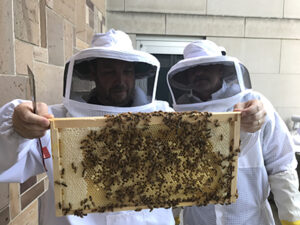
2. You can tell which bee is the queen because of her long body.
The queen bee’s only job is to lay eggs that become larvae (also called “brood”) and grow into bees. She usually is the mother to most of the bees in the hive. If the queen bee dies, the hive must replace her, or else no more eggs will be laid, and the hive will die.
Beekeepers make sure their hive has a queen so they can help replace her if needed. She can be spotted because her body is a lot longer than the worker bees around her. Sometimes beekeepers will mark their queen with a dot to help them quickly identify her. Can you spot which bee is the queen in the Indiana State Museum’s hive?
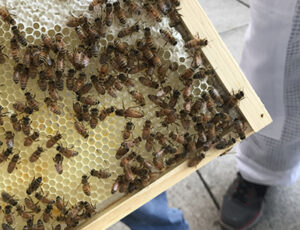
3. In at-home beehives, you only take honey from special boxes called the “supers.”
The worker bees make the honey, and the queen lays the eggs…so how do we make sure there aren’t any eggs in our honey? That’s a SUPER question! Beekeepers add a special box on top of the main hive body, called a “super.” While bees put honey and larvae in their main bee hive, they only put honey in supers, so you don’t have to worry about any larvae in your honey. Beekeepers make sure not to take too much honey from the bees, who need the honey to survive.
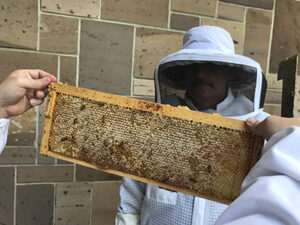
4. Bees don’t sting without a reason.
When you’re out in the backyard and a honey bee starts flying around your head, what’s your first thought? “It’s going to sting me!” But actually, the bee is usually just checking things out to see if you have any nectar or pollen. Bees only sting when they feel threatened or surprised. That’s why the best thing to do when you meet a honey bee is to slowly and calmly walk away—don’t run or swat at it.
Our beekeepers protect themselves from bee stings by wearing bee suits, including protective covering over their heads. When the beekeepers open up the hives, the bees may feel threatened and be more likely to sting.
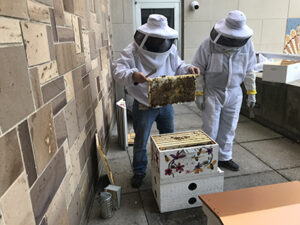
5. Honey tastes different depending on which plants the nectar came from.
Have you noticed that different honey is lighter or darker, or that some is more yellow in color, while other honey is redder in color? That’s because honey looks and tastes different based on the types of plants bees visited to make the honey. Honey from bees located in the middle of acres of California almond trees will be different than honey from a beehive in the middle of a wild forest in Brown County Indiana.
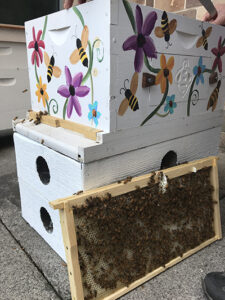
Bonus fact: What’s this I’ve heard about bees disappearing?
You may have heard reports of “save the bees!” and “our bees are dying!” In the past few years, beekeepers have reported more cases of bees abandoning their homes and what seems like just disappearing. This is an issue called colony collapse disorder (CCD). Researchers say there are many things effecting CCD. One of the major contributors is the increased use of pesticides on the plants from which bees consume pollen and nectar.
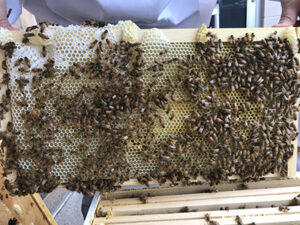
Programs like National Pollinator Week help bring awareness to how we can protect bees and the many other pollinators.








